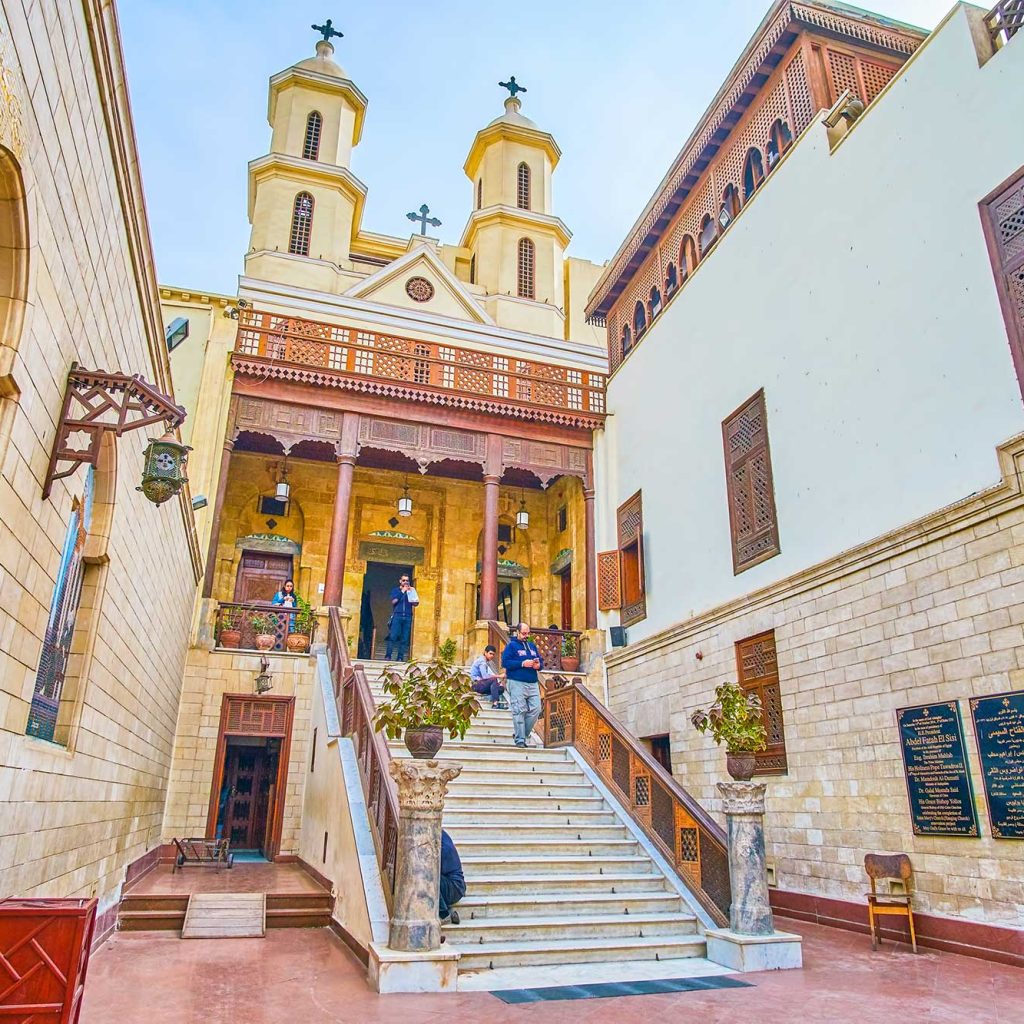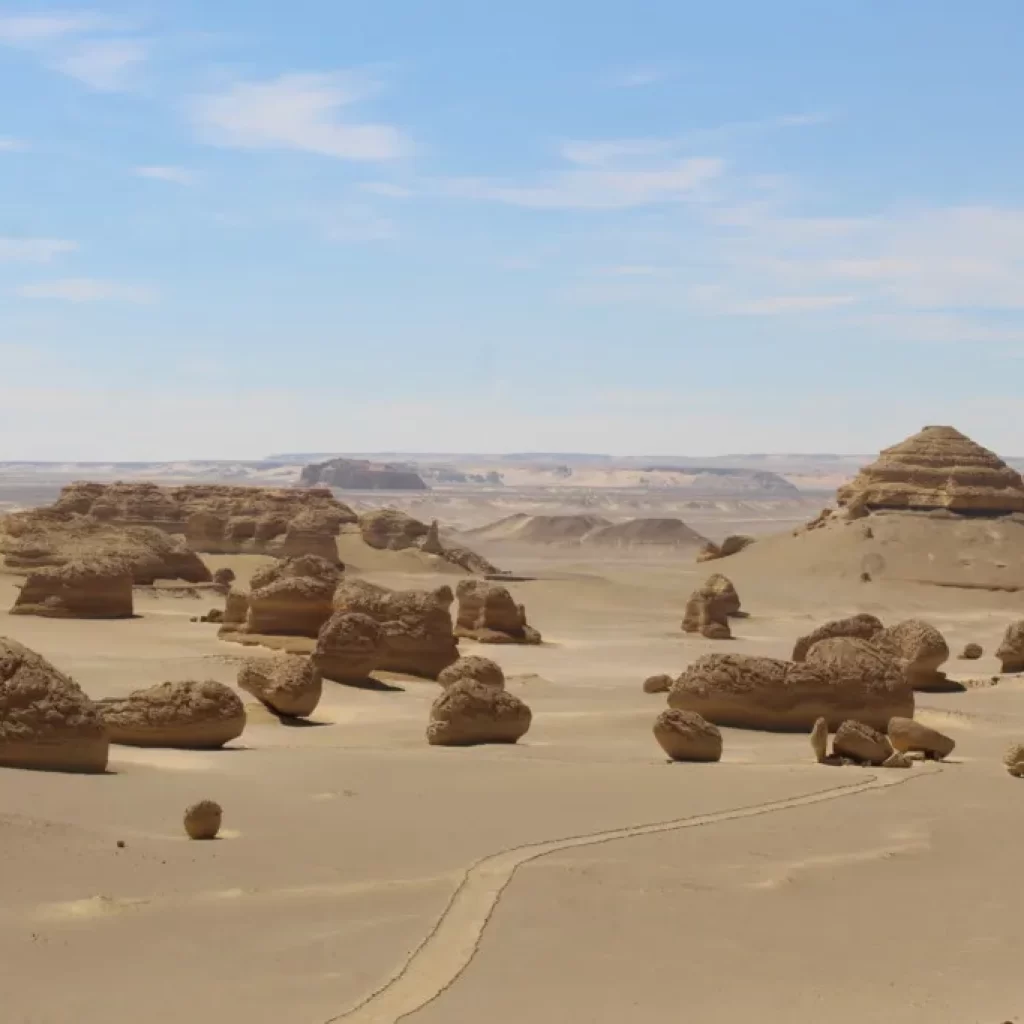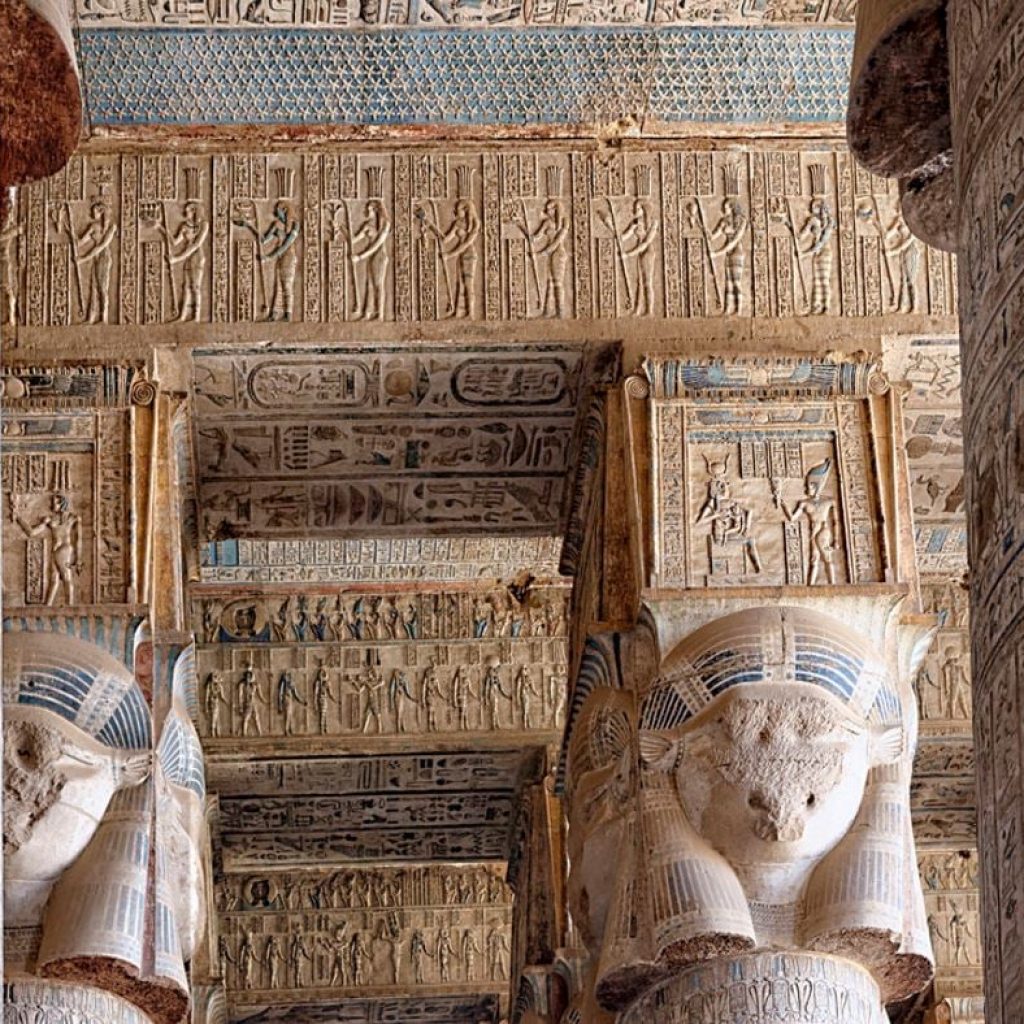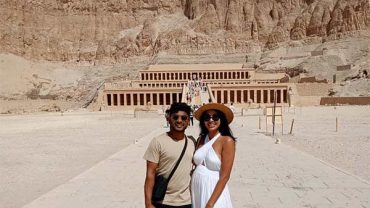Explore on a captivating journey through Egypt’s Top 20 Attractions and destinations. From the iconic pyramids to lively markets, each spot within this curated list has a unique story to tell. Explore ancient wonders and modern marvels that vividly showcase the rich history and culture of this captivating country.
Whether it’s the mysterious Sphinx, the grandeur of Luxor, or the tranquil Nile, each location encapsulates a glimpse into Egypt’s fascinating past and vibrant present. This visual adventure unravels the charm of this ancient land through Egypt’s Top 20 Attractions & Destinations.
Plan to see the most beautiful sights that characterize ancient Egypt. With our list of the best monuments and places you can visit in Egypt.
1. Pyramids of Giza

One of the seven most mysterious wonders of the ancient world (and the only one still in existence).
Having impressed travelers over the centuries, the tombs of the pharaohs Khufu (Khufu), Khafre (Khafre), and Menkaure (Micerinus), guarded by the mysterious Sphinx, are considered the main place where tourists go when they visit
Today, these rock-cut memorials to the dead pharaohs stand on the edge of the Cairo Desert. And are still as picturesque a sight as ever, and an undeniable landmark on any trip to Egypt.
– Pyramid of Cheops
Constructed around 2560 BC, the pyramid served as Pharaoh Khufu’s tomb, with a 20-year construction period. In the upper room, known as the King’s Chamber, visitors can view the coffin where King Khufu rests.
Accessible through a corridor with a majestic stepped roof, it stands as one of ancient architecture’s masterpieces.
– Khafre’s pyramid
It is one of the pyramids of Giza in Egypt. Built by King Khafre. He is lower in height than his father’s pyramid (Khufu). It was built on an area of 215 m2 and has two entrances on the north side. The still retains part of the outer covering on the top.
– The pyramid of Menkaure
It is the smallest of the three main pyramids of the Giza pyramid complex located on the Giza Plateau on the southwestern outskirts of Cairo, Egypt. It is believed to have been built to serve as a tomb for the Egyptian pharaoh Micarenos.
Most visitors limit their site visit to the three pyramids and the Sphinx, but there is plenty to see on the Giza Plateau. If you can, take time to explore the burial complexes of the Eastern Cemetery (on the eastern side of the Cheops Pyramid). The tombs of the Qar and Edo high officials of the Sixth Dynasty and the tomb of Meresankh III (who was one of Pharaoh Khafre’s wives) are all open to the public
2. Luxor’s Temples & Tombs

Luxor, located on the banks of the Nile in Upper Egypt, is famous for its Valley of the Kings, Karnak Temple, and Hatshepsut Memorial Temple, and has an abundance of tourist attractions.
Luxor’s eastern bank is home to the modern city with its impressive market. Karnak and Luxor temples; And the museum. The fertile farmlands and barren slopes of the West Bank are where the vast majority of Luxor’s tourist attractions are located, with so many tombs and tourist temples that it has been called the world’s largest open-air museum.
Spend a few days here exploring the colorful wall art of the tombs and gazing in awe at the massive columns in the temples, and you’ll see why Luxor continues to fascinate historians and archaeologists.
The Valley of the Kings is one of the most visited sites in Egypt
Start your tour at 6 a.m. in the Valley of the Kings, and you’ll be able to experience the interiors of Luxor’s famous New Kingdom tombs with no one else (except a handful of early risers) there.
3. Cruising the Nile

One of Egypt’s most important landmarks is the Nile River. Therefore, a sea trip that takes several days on this famous waterway, which witnessed the emergence of the Pharaonic era, is one of the most important Egyptian trips.
Sailing on the Nile River is the most relaxing way to see the temples that line the river banks on the road between Luxor and Aswan, in addition to sunrise and sunset on the palm-studded river banks, backed by dunes, which is one of Egypt’s most beautiful and serene views.
The two popular sights on a Nile Cruise are the Temple of Kom Ombo and the Temple of Horus at Edfu, where all the large cruise boats stop.
If you prefer a less crowded, slower experience, and don’t mind a little ‘roughness’, you can also take a trip down the Nile in Fermecca (traditional wooden boats that sail late in Egypt), which also allows you to create your own itinerary.
These tours depart from Aswan to Luxor
4. Aswan

Egypt’s most tranquil town is Aswan, set upon the winding curves of the Nile. Backed by orange-hued dunes, this is the perfect place to stop and unwind for a few days and soak up the chilled-out atmosphere.
Take the river ferry across to Elephantine Island and stroll the colorful streets of the Nubian villages. Then ride a camel to the desert monastery of St. Simeon on Aswan’s east bank. Afterward, relax in one of the riverboat restaurants while watching the lateen-sailed feluccas drift past.
Make sure to jump aboard a felucca at sunset to sail around Aswan’s islands. This is by far, Aswan’s most popular activity and the most relaxing way to take in the local sights.
There are plenty of historic sites here and numerous temples nearby, including Philae Temple on its island, but one of Aswan City’s most popular things to do is simply kicking back and watching the river life go by.
5. Abu Simbel

Abu Simbel, celebrated for its megalithic proportions, showcases an incredible engineering feat accomplished by UNESCO in the 1960s. The entire temple was moved from its original setting to prevent it from disappearing under the rising waters of the Aswan Dam.
Today, exploring Abu Simbel is just as much about admiring the triumph of this international effort to save the temple complex as it is about gaping in wonder at Ramses II’s awe-inspiring building works.
The Abu Simbel temple is one of the most impressive and spectacular buildings in Egypt.
The temple is made up of several temples, such as the Temple of Ramses II and the Temple of Nefertari, the pharaoh’s favorite wife. However, during the construction of Lake Nasser, many Egyptian antiquities disappeared under the waters of the lake. Thanks to a UNESCO campaign, the work of saving the Nubian temples began in 1960. like the two temples of Abu Simbel: those of Pharaoh Ramses II and his wife Nefertari, both located a few meters from the banks of the Nile.
Also on February 22 and October 22 each year, the eyes of the world turn to the extreme south of Egypt, where the tourist city of Abu Simbel witnesses a unique astronomical event, in which the sun embraces the face of King Ramses in a phenomenon that the ancient Egyptians personified thousands of years ago inside their ancient temples, thus embodying one of the greatest feats of engineering in Egyptian history.
6. Diving the Red Sea

Below the Red Sea’s surface is another world as fascinating as the temples and tombs on land.
The coral reefs of the Red Sea are renowned among scuba divers for both the soft corals on display and the vast amount of sea life, ranging from colorful reef fish and nudibranchs to sharks, dolphins, turtles, rays, and even dugongs.
For divers, the most famous town to base yourself in is Sharm el-Sheikh on the Sinai Peninsula, closest to the reefs of Ras Mohammed National Park, as well as the reefs of the Straits of Tiran.
To dive the sites of the Straits of Gubal head to Hurghada or El Gouna on the Red Sea coast, while advanced divers should check out the resort of Marsa Alam, the nearest base for diving Egypt’s “deep south” dive sites.
7. Explore Historic Cairo

There is a wealth of history in this place to explore. Visit the Al-Azhar Mosque and the impressive Sultan Hassan Mosque, and be sure to climb to the roof of the ancient medieval gate of Bab Zuweila for the best panoramic, minaret-filled views across the region.
Filled with symbols of Islamic history, this area is surrounded by numerous markets and is home to some of the most beautifully preserved architecture of the ancient Islamic empires.
Morning is the best time to visit this area as the gorges are at their quietest. If you plan to visit area mosques, avoid visiting on Friday (the Muslim holy day). If you want to enter mosques as a tourist, dress modestly (covering arms and legs) and bring a scarf with you to throw over your head if you are female.
Shoppers should head to Khan Al Khalili in the evening: all the shops here are open until late and the market is at its most lively after dark.
8. South Sinai’s Beach Life

The South Sinai region of Egypt, on the Sinai Peninsula, offers a beach for every type of traveler.
Sharm El Sheikh, resembling a European-style resort city, boasts luxury hotels, international restaurants, and varied entertainment options. It’s a favored destination for tourists seeking sun, sand, and exquisite beaches.
In contrast, Dahab, a straightforward beach town, caters to budget travelers, emphasizing desert treks and adventures as much as seaside activities. Notably recognized for its affordable diving deals, Dahab’s lagoon beach area offers premier opportunities for windsurfing and kitesurfing.
Up the coast, between the coastal town of Nuweiba and the border town of Taba, there are bamboo huts that offer complete breaks to get away from everyday life and get back to the basics of beach life.
9. Saqqara

Everyone has heard of the Pyramids of Giza, but they are not the only pyramids that Egypt has. There is also Saqqara, which is a vast necropolis of tombs and pyramids that were used during every era of Pharaonic rule.
It is famous for the Old Kingdom Step Pyramid, which shows how the architects of ancient Egypt developed their engineering knowledge to eventually create a true pyramid shape.
The Pyramid of Djoser, also known as the Step Pyramid, is located in the Saqqara Necropolis.
The pyramid features six terraces, with galleries and wells directly carved into the rock inside, revealing deposits of royal family mummies. Renowned for the white and turquoise ceramics discovered within and the weighty pink granite slabs covering the burial chamber.
Additionally, Saqqara houses the recently opened tomb of Mehu, untouched since its 1940 discovery.
This Sixth Dynasty figure received an honorable burial in an isolated location, safeguarding it from thieves and preserving the hieroglyphs in excellent condition. There’s plenty to see beyond the Step Pyramid, with some of the surrounding tombs, such as the Mastaba of Ti, displaying some of the finest tomb paintings you’ll see in the country.
Nearby, the site of the Pyramid of Dahshur is home to the Red Pyramid and the Leaning Pyramid, which should be included in any visit to Saqqara.
10. Egyptian Museum

Among the museum’s unparalleled antiquities is the Narmer painting, which immortalizes the unification of Upper and Lower Egypt under one king, and is among the museum’s priceless artifacts. In addition to a large group of statues of the great Kings, Cheops, Chephren, and Menkaure, the builders of the Pyramids of Giza.
Until the much-delayed opening of the Grand Egyptian Museum (GEM) in Giza, the Egyptian Museum is also the place where you can see a selection of the riches of Tutankhamun’s Valley of the King’s Tomb. When the Grand Egyptian Museum finally opens, these objects will be moved there (and the entire Tutankhamun collection will be on display in its entirety for the first time).
11. White Desert

The White Desert National Park, which lies in the Western Desert to the south of the Bahariya Oasis, is one of Egypt’s most peculiar natural treasures. This place has bizarre chalk peaks and enormous rocks that tower over the desert plains, giving the impression that icebergs have become caught in the sand dunes.
12. Alexandria

There are hardly many historical accounts that compare to Alexandria’s.
Established by Alexander City the Great, the birthplace of Cleopatra, and for a considerable period of its existence, a razzmatazz rebel city of the Mediterranean, this coastal city exudes an alluring aura of bygone eras.
The long seafront Corniche road guides visitors to Alexandria’s fort, located where the renowned ancient lighthouse once stood. Despite the scarcity of historical relics from its illustrious past. This road remains a popular summertime destination for both Egyptians and tourists from other countries.
Here, underwater archeological projects have given Alexandria’s museums a wealth of fascinating displays. Among the few historical sites in the city are the Bibliotheca Alexandrina, a modern interpretation of Alexandria’s renowned ancient library.
13. Abydos Temple

The temple, begun by Seti I, sits amid a vast necropolis site where archaeological excavations are ongoing. There a various other temple remnants to see here but for most visitors, the Temple of Osiris is the main reason to visit.
Its hypostyle halls, graced by papyrus-headed columns, contain some of the finest relief work in Egypt, with various scenes portraying the pharaoh and the gods of Ancient Egypt.
As the temple lies north of Luxor, it isn’t on the main Nile cruise ship route, so it receives much fewer visitors than the temple sites in Luxor itself and the Nile-side temples to the south. This means you are often lucky enough to wander through the temple’s halls with only a few other visitors on site.
14. Siwa Oasis

Nestled in solitude at the westernmost point of the Western Desert. Siwa Oasis serves as a peaceful counterbalance to the bustling towns of Egypt. Nestled among multiple hot-water springs and date palm farms. This exquisite small oasis is one of the most stunning locations in the Western Desert.
Several temple remnants grace the broader oasis area, among them the Temple of the Oracle. It is rumored to have been visited by Alexander the Great for advice. Siwa town revolves around the ruins of the vast mud-brick citadel. The Fortress of Shali offers a commanding view.
This is a great place to unwind and take it slow for a few days. It’s also a great starting point for exploring the surroundings.
15. St. Catherine’s Monastery

St. Catherine’s, among the world’s oldest monasteries, stands at the foot of Mount Sinai in the desert mountains of the Sinai Peninsula. According to tradition, it’s the site where Moses received the Ten Commandments.
This desert monastery is home to an incredible collection of religious iconography, art, and manuscripts.
For most visitors here, a trip to St. Catherine’s also involves a hike up Mount Sinai to see sunrise or sunset. Take the camel path for the easy route, or climb the famous Steps of Repentance if you want better views.
16. Red Sea Beaches

When visiting temples, visitors can take a break and enjoy the wide expanses of sand along Egypt’s Red Sea shoreline.
The resorts dotted along the shoreline near Hurghada come alive in the winter. European families travel there as part of package vacations.
Opting for a resort on the Red Sea coast instead of one on the Sinai Peninsula. The major advantage of being able to visit Luxor in a day. The ideal destination for beach lovers who still wish to have easy access to some of Egypt’s most well-known landmarks.
The two major tourist towns are Hurghada and El Gouna; Marsa Alam, a tiny town that is currently developing, is located much further south.
17. Coptic Cairo

One of the most significant Christian locations in the nation is the neighborhood in Cairo known as Coptic Cairo.
Dating back to the Achaemenid Empire’s conquest of Egypt in 525 BCE, this district was once the Fortress of Babylon. It is now home to Cairo’s oldest surviving church, synagogue, and mosque. It is also home to the excellent Coptic Museum. The largest house collection of Coptic Christian art and antiquities in the world.
The district’s entrance is within a section of the restored and enlarged walls of the Fortress of Babylon from the Roman era.
Make sure to visit the Hanging Church, named after the Roman water wheel it partially covers, boasting a superb collection of icons. Afterward, stroll down the narrow alley to the Church of St. Sergius and Bacchus. According to local legend, this church was built on the spot. Where the Holy Family sought refuge from King Herod with baby Jesus.
Adjacent to these sites, the well-known Ben Ezra Synagogue is where the Geniza document trove was discovered.
The Amr Ibn Al-As Mosque is a short stroll away. Following his conquest of Egypt, the Arab Muslim army commander (and eventually Egypt’s first governor) erected it.
18. Wadi Al-Hitan

Situated in the Fayoum region, Wadi Al-Hitan is a verdant, lush valley nourished by historic canals and encircled by desert.
While the Fayoum itself is an intriguing spot to visit, the major draw for tourists. The neighboring Wadi Al-Hitan (Wheale Valley) is a UNESCO World Heritage site. Other attractions in the area include Lake Quran, the pottery village of Tunis, and Pharaonic antiquities strewn across the hinterland.
The discovery of a sizable fossil cache including the remains of the earliest prehistoric whales. The Basilosaurus and Dorodontus, are among the orange dunes and angular rocks of this desert valley. It has greatly advanced our knowledge of whale development.
Walking trails stretch from the visitor center to skeletal sites nestled among the sand. Where some of the artifacts have been preserved in their original locations.
A specialized museum within the visitor center provides a comprehensive explanation of the significance of Wadi Al-Hitan and showcases numerous. Other discoveries made at the location, such as an 18-meter-long basilosaurus whale skeleton.
19. Temple of Hathor

The Temple of Hathor was built in the late Pharaonic era and underwent expansion during the Roman era.
Given its youth and its status as one of the most complete remaining temples in Egypt, a day’s journey from Luxor is well worth it.
Here, the decorations and reliefs have been kept in superb condition. Specifically, see the wall reliefs depicting the Roman Emperor Tiberius paying homage. The Egyptian gods and the columns topped with the heads of Hathor, the goddess of Egypt.
Dendara is just outside the city of Qena, 80 kilometers north of Luxor.
20. Monastery of St. Anthony

The Monastery of St. Anthony is nestled in the craggy northern slopes of the Red Sea coast. Currently houses about 120 monks. Established in the fourth century, it functions as a monastery.
Within the fortified compound, the Church of St. Anthony showcases secco wall paintings from the 11th and 12th centuries. This collection is widely recognized as one of the world’s most significant examples of Egyptian Coptic art.
The church is a popular destination for Egyptian Coptic Christians on their annual pilgrimage. Also houses the burial of St. Anthony, the founder of monasticism.
Monks lead guided tours of the monastery that allow you to head up and stroll. The top of the walls as well as the church and a few of the gardens.
The monastery of St. Anthony is incredibly remote. Hiring a driver from Cairo or Hurghada is the easiest method. Get here if you don’t have your own transportation.




Comment (0)